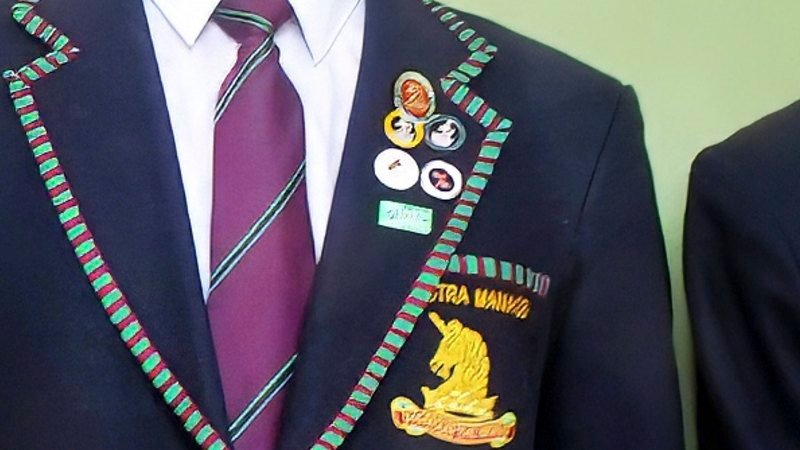Select-entry government schools are supposed to be the great equaliser, but very few disadvantaged kids go to them.
Select-entry government schools are supposed to be the great equaliser, but very few disadvantaged kids go to them.
By Alex Crowe
January 22, 2025 — 4.00am
Wealthy families are dominating enrolments at Melbourne’s select-entry government schools, as expensive private tuition gives children from higher socioeconomic backgrounds a leg-up over their less-well-off peers.
More than 60 per cent of all students enrolled at Melbourne’s four select-entry schools are from top socio-educational-advantage backgrounds, way above the Australian distribution of 25 per cent.

All-boys school Melbourne High and Mac.Robertson Girls’ High School, the two best-performing public schools for VCE in 2024, had the highest percentage of advantaged students among select-entry schools last year.
All four schools enrolled fewer disadvantaged students in 2024 than they did 10 years ago.
Melbourne High principal Tony Mordini said most students at the South Yarra school were from two categories: recently migrated families or families eager to be part of the school’s repeated success.
“It is a group of very aspirational families that are working very hard to advance themselves and their children. In many cases [they are] probably new arrivals, or first or second-generation arrivals,” he said. “We also attract a lot of people who see our performance as one of the highest-performing secondary schools in the state and want to be part of the community.”
The Australian Curriculum Assessment and Reporting Authority developed the Index of Community Socio-educational Advantage to enable fair NAPLAN school comparisons. It says the index is not based on wealth but on parents’ occupation and education level.
Melbourne’s select-entry public schools are ranked similarly to the state’s most expensive private schools. The competition to get into them is just as fierce.
Advertisement
Thousands of students are expected to apply to sit the entrance exam for one of about 1000 spots at the South Yarra, Werribee, Berwick and central Melbourne select-entry government schools from next month. The cost of test preparation tuition can exceed more than $5000, and tutors charge up to $200 for private lessons.
Loading
Deakin University associate professor in education Emma Rowe said select-entry schools had traditionally favoured students who excelled in the maths component of entry tests.
The families of most students who applied had consequently paid for maths tutoring for many years, Rowe said.
Select-entry schools had a vested interest in enrolling students from high-income families, as they were often more willing to pay higher voluntary school fees and provide private donations, she said.
Melbourne High has the highest voluntary fees of the select-entry government schools, with suggested payments totalling close to $4000 for parents of year 9 students, not including extracurricular items and activities.
Rowe said select-entry schools were an asset in an equitable education system, but diversity quotas, taking student selection power away from schools and capping schools’ fee-raising capacity were crucial.
“People often think that select-entry schools are more likely to serve a mixed cohort of students, so more diverse students from lower socioeconomic status backgrounds, or perhaps more Indigenous students as well – they really don’t cater to diverse cohorts at all,” she said.
“Students tend to represent parents who are highly educated and also from a professional occupation.”
The NSW Education Department introduced a policy reserving up to 20 per cent of places for students from disadvantaged backgrounds at the state’s selective schools from 2023, after a review found there were fewer applications from students from low socioeconomic backgrounds, Aboriginal students, those with a disability and students from rural and remote areas.
But My School data analysed by this masthead shows there was little change last year in the socio-educational advantage of families at Sydney’s 10 most popular selective schools.
The Victorian Education Department did not respond directly when asked if attempts had been made to diversify select-entry school students. A spokesperson said thousands of high-ability public school students participated in specialist academic programs outside of selective schools each year.
“Victoria remains the education state by ensuring every student in every government school receives a great education,” a spokesperson said.
“Students have access to great opportunities to enrich and extend their education in every Victorian government school – more than 90,000 students in years 5 to 8 from government schools across Victoria have participated in the Victorian High-Ability Program since 2020, and more than 160,000 students from prep to [year] 12 have participated in the Victorian Challenge and Enrichment Series.”
Our Breaking News Alert will notify you of significant breaking news when it happens. Get it here.
Alex Crowe is an education reporter. She joined The Age as a breaking news reporter in 2023.Connect via Twitter, Facebook or email.
Loading
Discover more from World Byte News
Subscribe to get the latest posts sent to your email.



